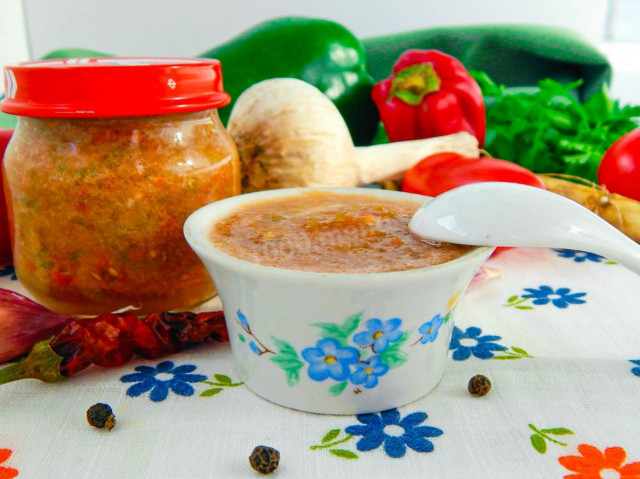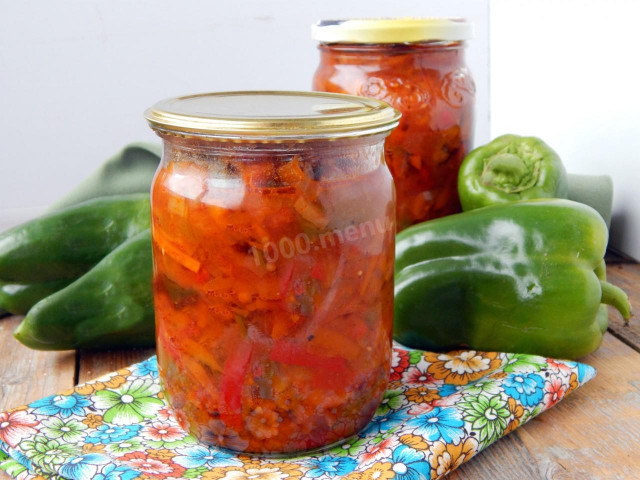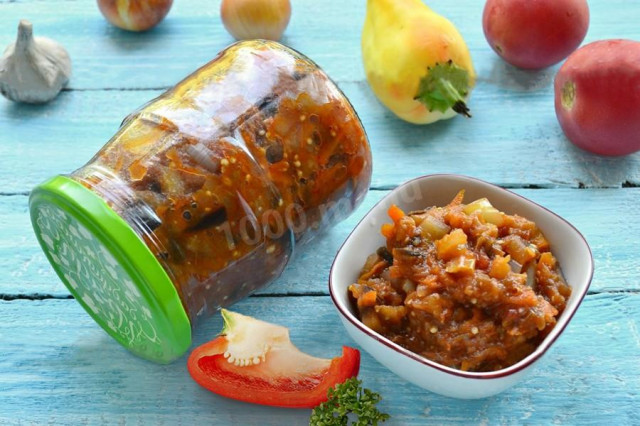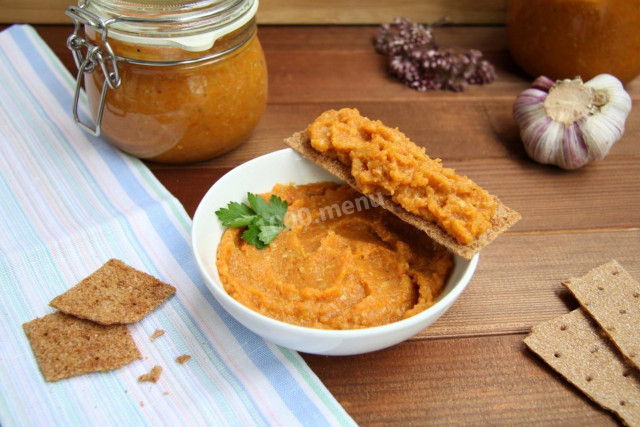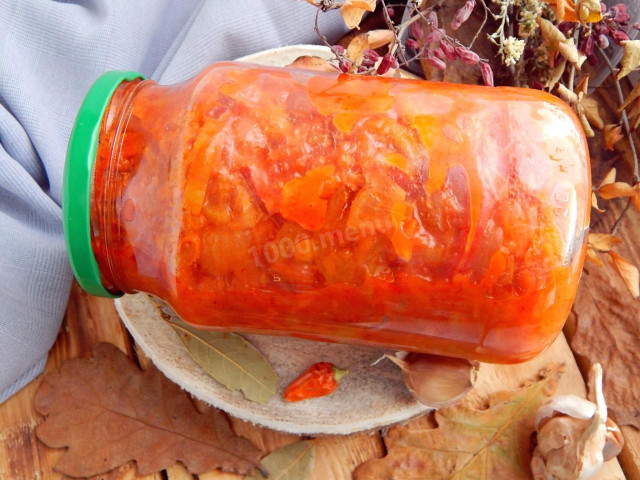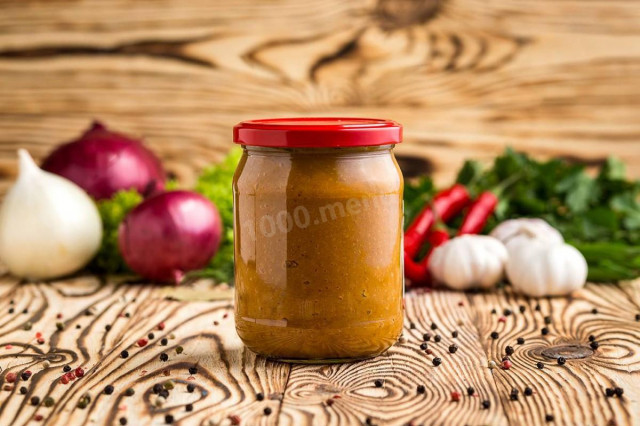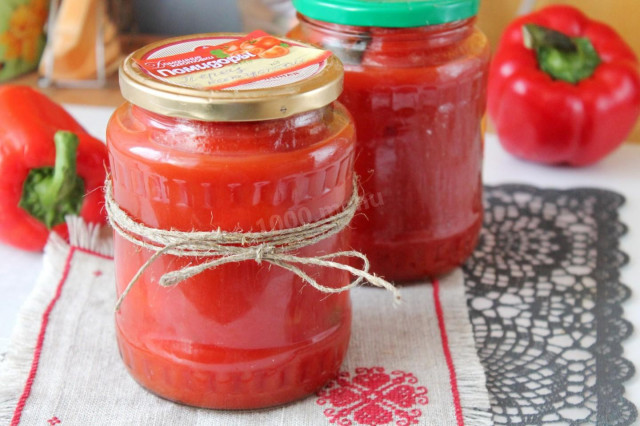Composition / ingredients
Step-by-step cooking
Step 1:
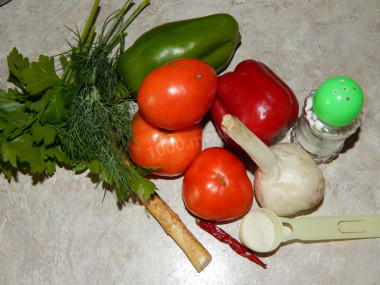
How to make adjika sweet for winter? Prepare the products. The preparation will turn out to be healthier and tastier if it is prepared during the harvest season from its site. In addition, adjika will be much cheaper. Take mature, strong vegetables, without signs of spoilage. Pre-wash them well and dry them. Take the oil odorless. Table vinegar, 9%.
Step 2:
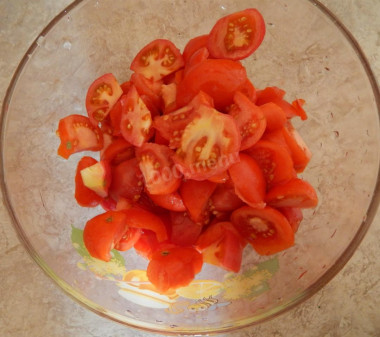
Cut tomatoes into quarters and remove the attachment point of the stalk. Then cut the tomatoes into pieces.
Step 3:
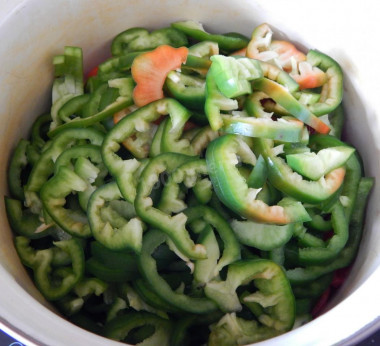
Remove the stalk with seeds from the bell pepper. Cut the peppers into large pieces.
Step 4:
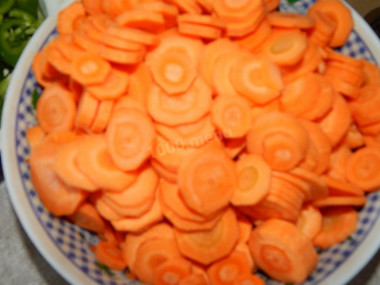
Peel the carrots and cut them into large circles.
Step 5:
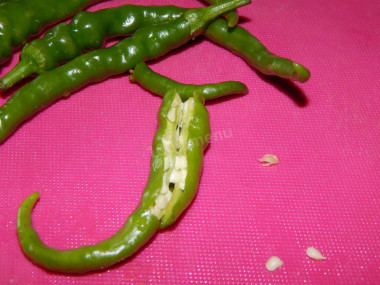
Rinse the fresh parsley and dill thoroughly under running water, dry with a paper towel and finely chop. I wanted to give adjika a little edge and added quite a bit of hot pepper and horseradish. Hot pepper can be used ground or a small piece of capsicum. Horseradish can also be added to the composition of products crushed, ground or cut into several small pieces of fresh root.
Step 6:
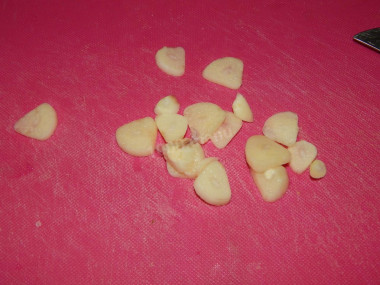
Peel the garlic cloves and finely chop.
Step 7:
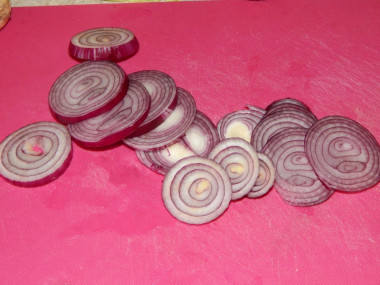
Peel the onion, cut into large pieces or circles.
Step 8:
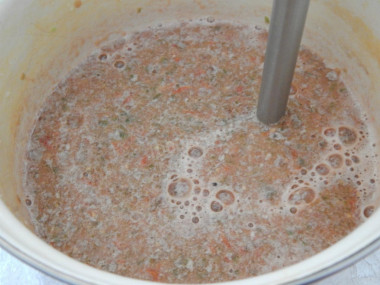
Using a meat grinder, blender or food processor, chop all the vegetables (except garlic) into a homogeneous mass. Put the vegetable puree in a saucepan, put it on fire. Add sugar, salt, vegetable oil. Bring the mass to a boil, reduce the heat to a minimum and simmer the adjika for 2 hours, stirring it periodically with a spatula. Then pour in the vinegar, add the chopped garlic and simmer for about 20 minutes more.
Step 9:
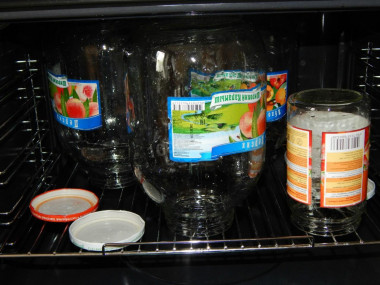
While the adjika is being prepared, prepare the jars for the preparation. Wash the cans with soda and sterilize them in one of the usual ways: in a water bath, in an oven or in a microwave oven. Wash and boil the lids, or sterilize them together with the jars in the oven.
Step 10:
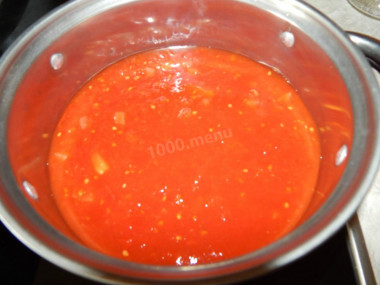
Put the finished adjika into sterile jars and immediately roll up the lids. The workpiece does not require additional sterilization. Since the horseradish contained in the adjika is an excellent preservative, it will not allow the adjika to deteriorate. Allow the workpiece to cool under the blanket and put it away for storage in the pantry. Bon appetit!
How to calculate the number of cans, why banks explode and how to avoid it, as well as secrets and life hacks, read the article about preparations for the winter.
Root vegetables are best washed with a brush or a hard sponge under running water.
Since the degree of salinity, sweetness, bitterness, sharpness, acid, burning is individual for everyone, always add spices, spices and seasonings, focusing on your taste! If you put some of the seasonings for the first time, then keep in mind that there are spices that it is especially important not to shift (for example, chili pepper).
Caloric content of the products possible in the composition of the dish
- Tomatoes - 23 kcal/100g
- Sweet pepper - 27 kcal/100g
- Carrots - 33 kcal/100g
- Dried carrots - 275 kcal/100g
- Boiled carrots - 25 kcal/100g
- Garlic - 143 kcal/100g
- Granulated sugar - 398 kcal/100g
- Sugar - 398 kcal/100g
- Vegetable oil - 873 kcal/100g
- Hot capsicum - 40 kcal/100g
- Salt - 0 kcal/100g
- Onion - 41 kcal/100g
- Horseradish Root - 59 kcal/100g
- Table vinegar - 11 kcal/100g

